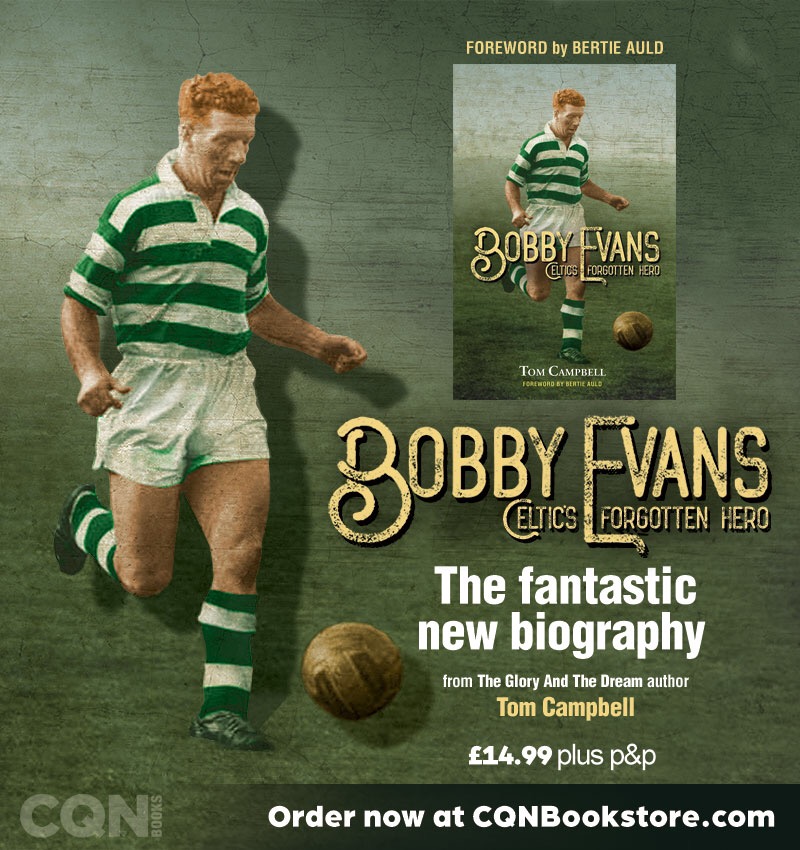“Bobby Evans?” said Bertie Auld. “The word ‘legend’ is too often over-used – and I can say that safely because I am one – but Bobby was a true legend.
“He played for Celtic for about sixteen years and for most of that time he was the best player on the books. Once he was switched to right-half in 1948, he found himself and he was ‘capped’ forty-eight times for Scotland – and for those days that was an achievement. For a Celtic player it could be considered a miracle! After Jock Stein retired as a player, Bobby moved to centre-half and, despite the fact that he was on the short side, was Scotland’s centre-half as well.
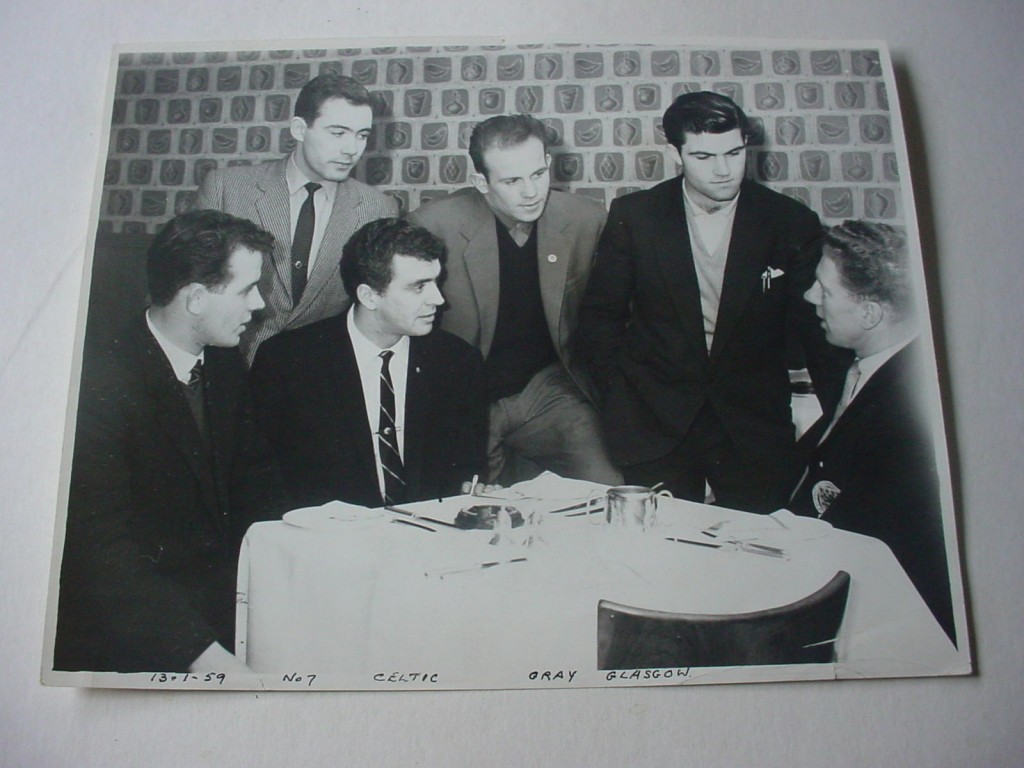
“You could always recognize Bobby with his red hair, and jersey outside his shorts, and with that boundless energy. And, of course, he was a great player. Truly great.
“I have personal memories of him as a player and as a man,” Ten Thirty continued.
“Did you know that I might have played in the famous 7-1 game in 1957 alongside Bobby? If I had, I would have become a legend ten years earlier. I was a ‘regular’ in the run to the final but the chairman decided that Neilly Mochan’s experience was needed against Rangers – and to be perfectly honest Neilly roasted Rangers’ Bobby Shearer that day. In fact, I remember that Bobby Evans was off the pitch getting treated for an injury when Rangers scored their only goal that day. That was Bobby Evans for you.
“He was Celtic’s captain when I broke into the team. It might surprise you but I was considered cocky, even ‘gallus’ when I was younger. But Bobby, a senior player, took me in hand; he used to invite me out to his house for meals and, when he talked football, he made a lot of sense. He gave me good, practical advice and he was always positive and encouraging. I think I made about fifty appearances for Celtic alongside Bobby and never once did I hear a negative word on the pitch or at training.
An inspiration, and a model for any player – even for a wee boy from Maryhill,” concluded Bertie.
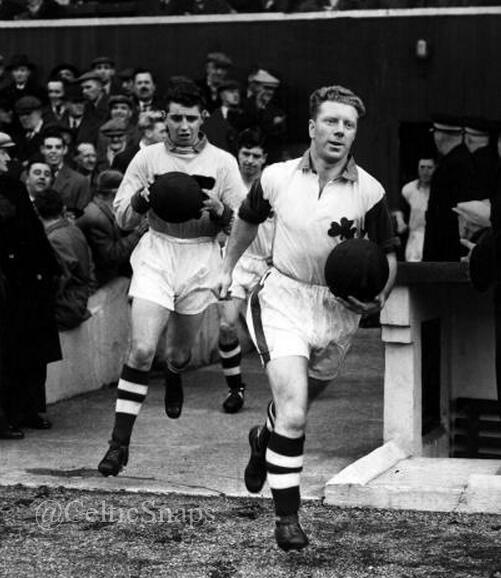
Football is much more than the voicing of opinions about last week’s game, or speculation about the next one.
It is about memories and recollections; it is about accounts of games played decades ago but momentarily revived by an older generation of fan. I too have reached an age when it sometimes becomes easier to recall incidents in games of fifty years ago than some detail in Celtic’s last match.
The images of those far-off days are specific and clear in my mind: I can still see John McPhail bursting through the Motherwell defence to clip the ball past the goalkeeper in the 1951 Scottish Cup final, I can remember Charlie Tully (hands on hips) asking a linesman to re-place the ball for him for a corner kick at Brockville in 1953 (and then scoring directly with it); I can still visualize Neilly Mochan letting fly from all of thirty yards in the Coronation Cup final and leaving Tommy Younger (Scotland’s international keeper) helpless; I can still wonder at Billy McNeill deciding at the last moment to move upfield for Charlie Gallagher’s corner kick in the closing minutes against Dunfermline Athletic at Hampden Park in 1965 …
For me and many others, Celtic’s history did not begin when television cameras were allowed into football grounds.
Sometimes I sympathise and identify with other older supporters when they attempt reminisce or engage with younger fans; I see their eagerness and desperation to convey exactly what happened, who was playing, what they did (and how). Sadly, in the absence of film or television re-runs those memories become more and more all we have.
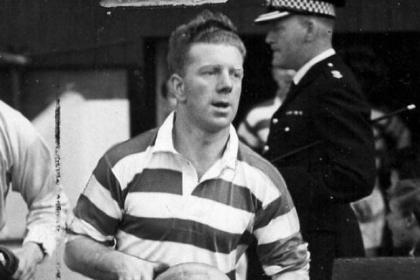
Patrick Reilly, in his elegant obituary of Bobby Evans, describes the predicament well: “I remember suggesting to a group of Celtic supporters during a discussion on a train bound for London that Evans was a name that might reasonably be ranked alongside those of Crerand and Murdoch. For a moment there was a stunned silence before peals of derisive laughter erupted at such an absurd judgement; they turned away to leave the old buffoon in the corner to his ludicrous reflections.”
It is a familiar scenario, this careless dismissal of the past by a younger generation but for a variety of reasons Bobby Evans, one of Celtic’s greatest-ever players, has become an unjustly neglected figure.
Admittedly, every published Celtic history has to pay tribute to his sterling qualities as a player and for his years of contributing manfully to Celtic’s story… but a couple of respectful pages here and there is simply not good enough. It is as if modern Celtic historians are merely paying lip service to honour this player.
More significantly, the fathers and grandfathers of present-day supporters still recall his performances with reverence and almost awe.
“Whenever I talk to those who remember watching Bobby play, he is always spoken about with affection and love. I wonder how many of the current Celtic team will be remembered in the same way thirty years from now.” (David MacDonald: Scottish Football Today, March 1981)
Those words are just as true today.

He was a truly magnificent player and, while there are people still alive who can remember him in a Celtic jersey, his remarkable career should be re-examined in some detail. And history should be forcibly re-lived for those supporters who never enjoyed the privilege of seeing him play.
I consider myself fortunate to have seen Bobby Evans regularly, and almost week after week, during his great years as a Celtic player, and marveled at him then. Time has not lessened my appreciation of a player whose efforts never flagged despite being so often hampered by the mediocrity around him.
In going over his life as a professional footballer, I was reminded of the fact Bobby Evans was still playing in his 40s and of the number of different clubs he had played for: St Anthony’s, Celtic, Scotland, Chelsea, Newport County, Morton, Third Lanark and Raith Rovers… and I have to admit my surprise at the various controversies ( and one in particular ) that surrounded him at different stages in that lengthy career.
For me, however, he will always be remembered as Bobby Evans of Celtic (and Scotland too). Red-headed, sleeves rolled up, jersey outside his shorts: Bobby Evans was the epitome of a Celtic player in talent, attitude and spirit.
Without argument, he was one of Celtic’s greatest-ever players. You may speak of men like Quinn or McGrory, of McNeill and Larsson … but nobody ever played so consistently well for Celtic for so long as Bobby Evans.
This is his story.

And it should be told if only to remind football fans that not too long ago the game was played by men who earned very little for their efforts on the field and who, when their careers were over, slipped back into the working-class lives they had left briefly for a season or two in the sun.
Let us start by giving some impressions of this truly remarkable player.
While it is relatively easy to describe Bobby Evans’ appearance in words, it becomes almost impossible to describe his style satisfactorily. He may have seemed like a Cavalier because of his enthusiasm and distinctive, youthful appearance, but always there was more than a hint of the Roundhead just below the surface. His energy, his exuberance to get the ball may have been eye-catching, even swashbuckling, but always there was effort and purpose to his endeavours. Within those 100% performances week after week there was an earnest and gritty dignity as well as gallantry.
Few images remain on film, and the camera-work on those venerable Pathe Newsreel clips are sketchy at best; television coverage, non- existent at the start of his career, was still virtually haphazard at the end, and memory can be hazy. Scottish football was different in those days, a sport in which physical contact was the norm. To use an over-worked phrase it was “a man’s game”. Defenders, in particular, were allowed greater latitude: shoulder-charging was tolerated within reason, the sliding tackle on muddy pitches was an art-form as was the tackle from behind as long as the ball was won and won fairly…
What was truly astonishing (and admirable) about Bobby Evans’ play was that, determined as he was and vigorous in competing for the ball, he was very rarely pulled up for illegal bone-jarring tackles.
Fortunately, some Celtic historians saw Bobby Evans frequently enough in action to recall him clearly.
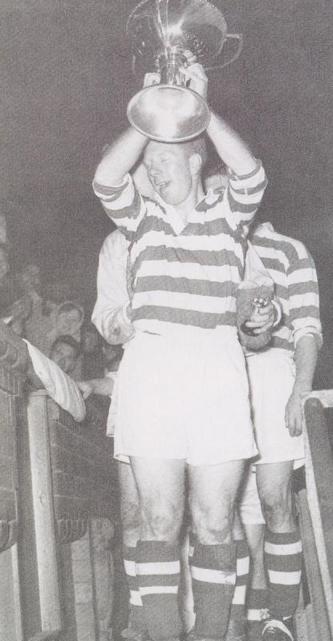
Physically Bobby Evans is easier than most to describe as his red hair, apparently stocky frame, and distinctive, energetic style made him stand out in memory. But the feeling of a writer’s inadequacy remains, the almost impossibility of capturing his essence as a player in words and communicating that to a younger generation.
So, perhaps one solution is to compare him to Celtic players more familiar and more easily recognized by present-day supporters.
Two comparisons come to mind immediately: Scott Brown and Neil Lennon. However, unlike those two modern midfielders, Bobby Evans rarely was in trouble with referees, and never incurred the wrath of the supporters of other teams.
Scott Brown is easily identified by his combative nature, his determination to win the ball. Fiercely competitive, his challenges often border on the illegal and occasionally trespass; when Scott Brown competes for a 50/50 ball, the whiff of danger always exists and Celtic supporters hold their breath. That was never the case with Evans whose tackling (or ball-winning) was impeccable by the standards of the day. Even today with different conventions Bobby Evans would rarely be penalized.
I was struck by an incident in a league fixture at Pittodrie near the end of the 2014/15 season: Scott Brown and an Aberdeen forward went for a ball on the edge of Celtic’s penalty area and Brown won it. The Aberdeen player was left sprawling but he had absolutely no grounds for complaint. That tackle, the vigour and the fairness of it, reminded me of a Bobby Evans’ challenge. But, to be fair to the present-day player, Brown went on up the field with the ball, combined with a couple of other Celts, and scored the winning goal; I don’t think Bobby would have ventured so far upfield.

It was the manliness of that particular tackle that recalled so much Bobby Evans. Delivered with assertiveness rather than aggression and totally within the rules, that reminded me of the Evans that I admired so much.
Neil Lennon, another Celt so often unfairly criticized for rough play, resembled Evans in one important aspect: a sense of anticipation that indicated an active football brain. Frequently Lennon would frustrate opposing players (and their fans) by stepping in at exactly the right moment to thwart an attack; it could be with an interception, or a tackle, but always it was an emphatic intervention, utterly decisive.
Evans also had that ability, the awareness of danger and the speed of thought to counter it. However, it is a talent frequently under-rated because it looks so easy. This form of anticipation (practised by both Lennon and Evans) is born of football intelligence – the visualisation of an opponent’s move in advance and an immediate adjustment to counter it. It should be remembered that an intercepted ball is not always a mis-placed pass.
Also, like Lennon, Evans had a physical sharpness to him best illustrated by an ability to win the ball at close quarters such as when an opponent has less than 100% control of the ball. With Lennon and Evans in the vicinity a loose ball was a lost ball.
Brown and Lennon are the most obvious comparisons but others come to mind.
Bobby Murdoch, a re-assuring presence even in the tensest of circumstances, always appeared unhurried and in control of any midfield situation, capable of still using the ball constructively even under pressure; Evans, also, when he had the ball at his feet never appeared rushed or harried…
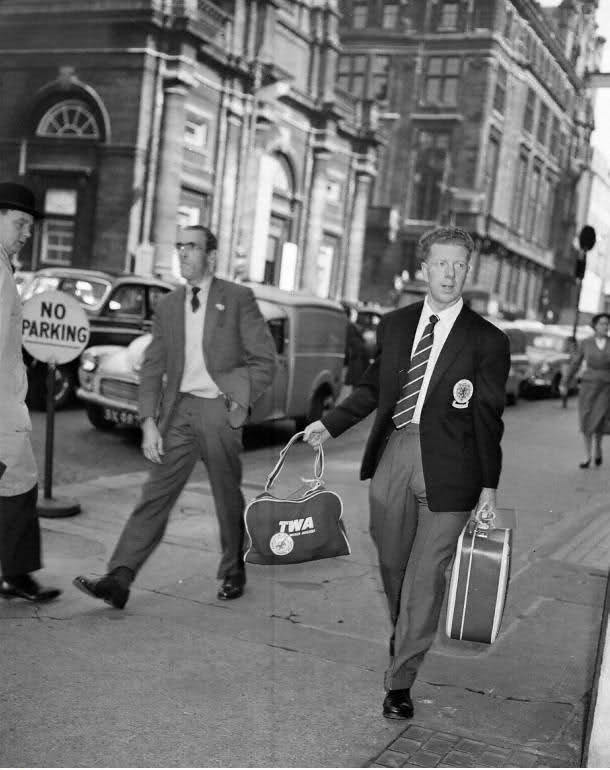
Always physical as a wing-half, Roy Aitken typically closed down opponents, badgered them into mistakes, urged on his own team by example. Evans too possessed that boundless energy and strength, that will-to-win, as apparent in dying minutes as it had been at the start.
In the Scottish Cup final of 1985 against Dundee United Aitken refused to give up on a loose ball in the closing stages, chased it to the touch-line, staggered as he gathered it, and crossed it into the penalty area for Frank McGarvey to head a dramatic winner. That lung-bursting run by Roy Aitken was so reminiscent of Bobby Evans.
Murdoch and Aitken, Lennon and Brown: in that distinguished Celtic company Bobby Evans would not have looked out-of-place.
Sports journalists too often over-do the hyperbole, and accordingly I asked three Celtic supporters of a venerable age to come up with one-word descriptions of his usual performances. Of course, all three of them had seen Bobby Evans in action often enough for their opinions to be valid.
The results were revealing.
All three started with Evans’ fitness and energy: ‘hard-working’, ‘industrious’, ‘spirited’, ‘dynamic’ and ‘tigerish’… and all three veteran supporters, perhaps sensing that their words are often applied to another type of player entirely, were quick to qualify their description by adding that Bobby Evans was “the cleanest player in Scotland”, and “a genuine sportsman”.
All stressed his importance to a maddeningly inconsistent Celtic side over several seasons: ‘dependable’, ‘capable’, ‘effective’, ‘pragmatic’… And, once again indicating that they had not captured the essential Bobby Evans in one word, added that “not only was he dependable, he was inspirational”. Another phrase stuck in the author’s memory: “Bobby always had a reassuring steadiness about him.”

Pat Woods, doyen of Celtic historians and a man not given to hyperbole, in a recent book describes Bobby Evans in lyrical terms:
“Evans, the idol of those schoolboys whose fathers used to take them down to the front of the Parkhead terracings to get a better view, Evans the player you wanted to imitate in the kickabout games with your pals in the schoolyard or backcourt, Evans the man whose brilliant and inspiring consistency earned him such nicknames as ‘Mr Dynamo’, ‘The Fighting Redhead’, and ‘Mr Perpetual Motion’…”
Bob Crampsey, who rarely was wrong about football, had been equally impressed: “A superb player, and remarkably consistent for so many seasons… clean as a whistle, and – unlike today’s players – a man who would never think of stealing a yard at a throw-in.”
October 19th 1957
It was once said of Hampden Park that, even in technicolour, it always looked grey … but not on this autumn day. The sky was blue, the grass was green; Rangers’ supporters were festooned in red, white and blue; Celtic’s in green and white … and the sun shone on a brilliant display by Celtic.
Everybody in green-and-white appeared on-form: Tully was holding the ball, confusing Caldow with his dribbling and passing; Mochan with his direct running, strength and shooting had Shearer, Rangers’ ‘Captain Cutlass’, panting in his wake; Collins was spraying passes, left and right, long and short; Fernie at right-half owned the mid-field; McPhail owned Valentine, Rangers’ centre-half…
Rangers attacked occasionally but every raid was foundering on Bobby Evans’ uncanny sense of anticipation; the Glasgow Herald felt his interceptions made the Ibrox attacks look more foolish than they were. At times Celtic’s centre-half was so confident that, instead of clearing willy-nilly, he would dribble the ball round Rangers’ attackers.
Celtic humiliated their great rivals by scoring seven times that day; Rangers had the minor consolation of one. Significantly, that goal was scored when Bobby Evans had left the pitch and was being treated on the side-line for an injury.
May 11th 1953
For the first minute or two of the Coronation Cup- tie against Arsenal, an underdog Celtic side appeared over-awed by the English champions’ arrogant approach as the visitors stroked the ball around a sun-lit Hampden pitch. Finally, when Arsenal condescended to mount a real attack, Bobby Evans, Celtic’s international right-half, was characteristically alert to intercept a slightly under-hit pass; he carried the ball forward and released Jimmy Walsh with a searching pass. Walsh raced through the middle and his fierce shot grazed Swindin’s post. Stirred into life, the crowd roared a collective approval as if recognizing the Londoners were not supermen, after all.
Five minutes into the match, when Arsenal were starting to look rattled, Bobby Evans – of all people – was involved in ‘an incident’. Preparing to mark an Arsenal forward, abruptly – and with no previous warning – Evans started towards another Arsenal player and his intentions were clearly hostile. Arsenal’s Scottish wing-half, Alec Forbes, like Evans red-headed, was the first to sense the danger; he grabbed Evans to halt his charge, held him there… and almost gently led his fellow Scot a few yards away from the scene. Forbes, a combative wing-half and with a reputation for losing a hair-trigger temper, was acting as a most unlikely peace-maker.
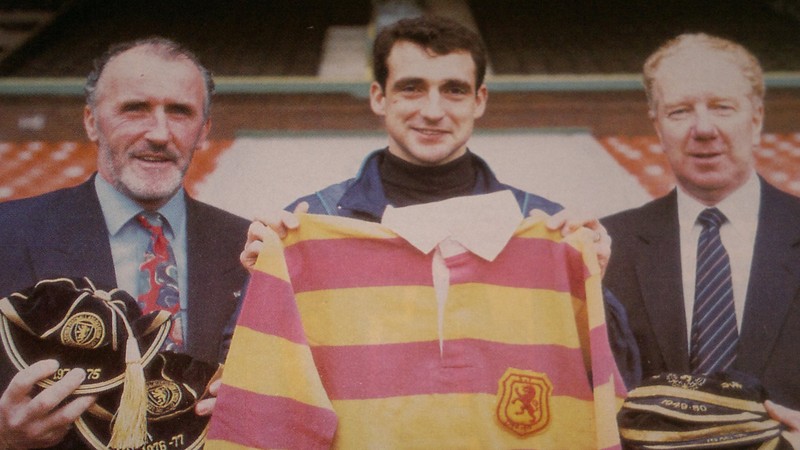
Nobody knew what had sparked the incident but something must have happened.
The match was only a few minutes old, no fouls had been committed, no intimidating tackles taken place … but yet Celtic’s international right-half, a player with an exemplary disciplinary record, had for a moment lost his temper. In hindsight it is obvious that something was said – probably in an English accent – and Evans had taken personal objection to it.
For the rest of that match Bobby Evans was his usual immaculate self, his leadership and example inspiring Celtic to an unexpected 1-0 win over their famous opponents.
November 5th 1950
Bob Kelly, Celtic’s autocratic chairman, shook his head emphatically and placed the two sheets of paper on the table. When he was irritated, his voice took on a pronounced Lanarkshire rasp, as it did now: “No, don’t send in this letter. Correct me if I am wrong, but I believe you enjoy playing for Scotland.”
He saw that the young player, Bobby Evans, Celtic’s right half did not disagree, and he continued, “If you send this in to the SFA as it stands, you will be guaranteeing that the Selection Committee will not be looking at you favourably in the future.”
The player (Bobby Evans) nodded, not in agreement with the advice but more in understanding of the situation. He would think again about sending a letter to the SFA asking not to be chosen for the national side – but he still felt he was completely justified in doing so. It was a classic dilemma for him.
January 11th 1947
A dreich, grey day in Glasgow, with an early kick-off to finish the match before darkness set in. With Celtic in tenth place and Queen’s Park mired in the relegation bog only 12,000 had turned up at Hampden Park for this league fixture. Celtic were leading by 2-1 on a heavy, sodden pitch when Willie Gallacher was ordered off in the first half.
The re-organisation meant that Celtic’s inside-left, Bobby Evans, moved back to take Gallacher’s place at right-half. Hardly a surprise as Evans, not yet twenty years old, had already played in every forward position for Celtic in less than his three full seasons as a regular; and, whenever Miller was injured during a match he had been press-ganged into the goalkeeper’s role.
What may have come as a surprise was the red-headed Evans’ performance as a defender. He was, as always, energetic and assertive; he was masterful in subduing his immediate opponent, fairly it should be added. If Celtic had had to play short-handed for more than an hour, nobody noticed – thanks to Evans’ contribution to the cause; in fact, McAloon increased Celtic’s lead before the end, beating the youthful R. Simpson in Queens’ goal.
Evans came in for praise in the newspapers: “The youngster Evans, who finished the match caked in mud, was Celtic’s best performer.” Unfortunately, nobody in authority at Celtic Park seemed to notice that Bobby Evans, so often mis-used as a utility forward, was ‘a natural’ at wing-half…
——-
Enjoying this? These are the first few pages from Bobby Evans – Celtic’s Forgotten Hero by Tom Campbell. This wonderful book is available at cqnbookstore.co.uk


